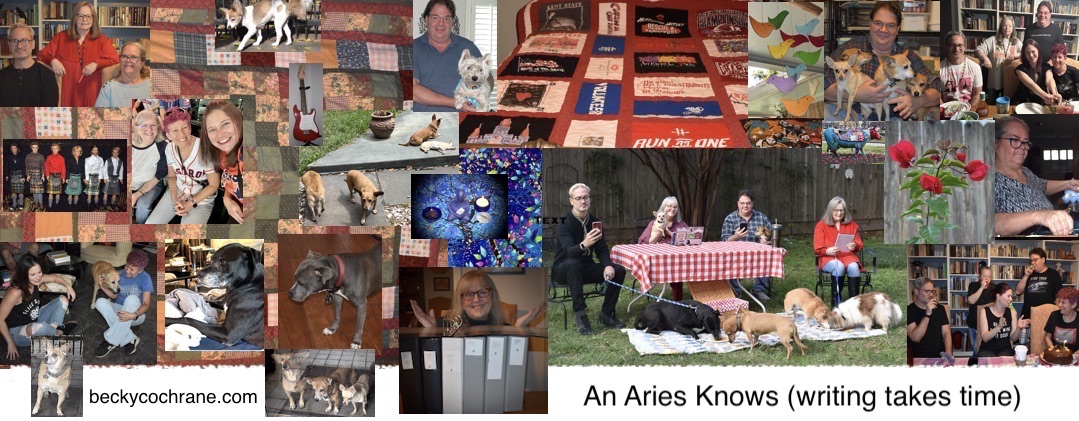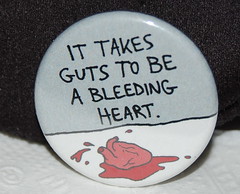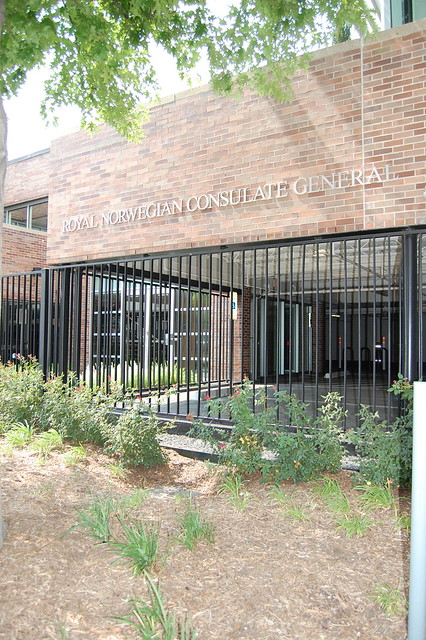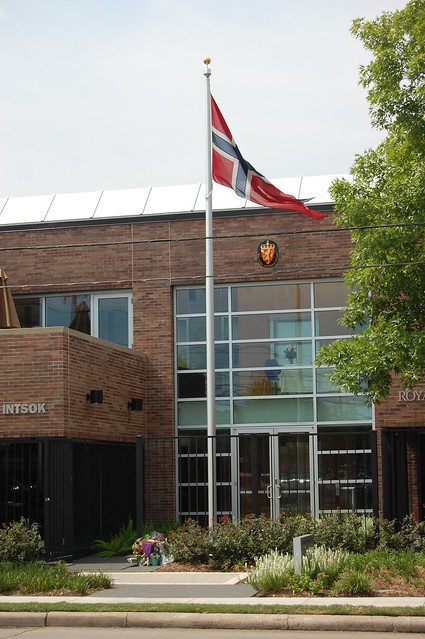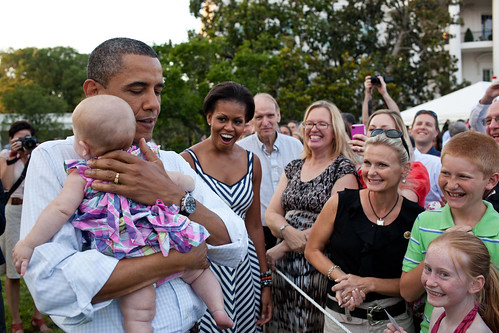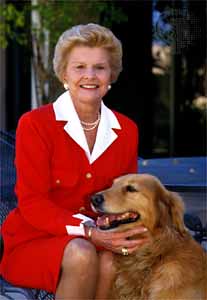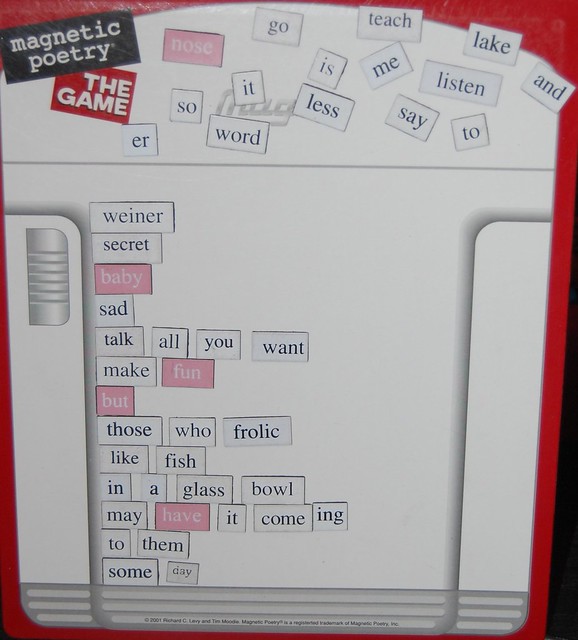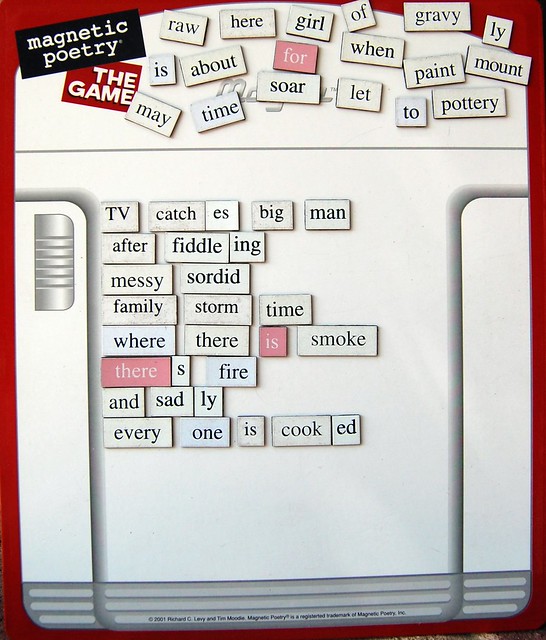I launched Button Sundays in September 2006 after getting an e-mail full of button photos from Denece. I don’t know if I’ve missed a Sunday since. I’m not about to go back through the archives to check, since I recently did that to replace or delete a lot of broken links, as well as LJ user names and other LJ-specific code that didn’t migrate to the new blog. Since the button launch almost five years ago, I’ve been given buttons from many of you (thanks!), searched the Internet for buttons to go with themes, events, or dates, and sometimes created buttons because I couldn’t find what I wanted.
My future plan for Button Sundays is to photograph and share buttons from my personal collection, which began when Lynne and I started collecting them as ‘tweens. If I can remember where I got the buttons, or from whom, I may include the details. Sometimes my memory will no doubt be inaccurate; we’ll call that “memoir,” which is closely related to “fiction.”
Buttons have been around since the late 1800s, when they were used mostly for political campaigns. I’ll begin with some of my political buttons related to the state of Alabama. Keep in mind, now and in the future, that ownership of a campaign or promotional button does not indicate my endorsement of a person or product. =)
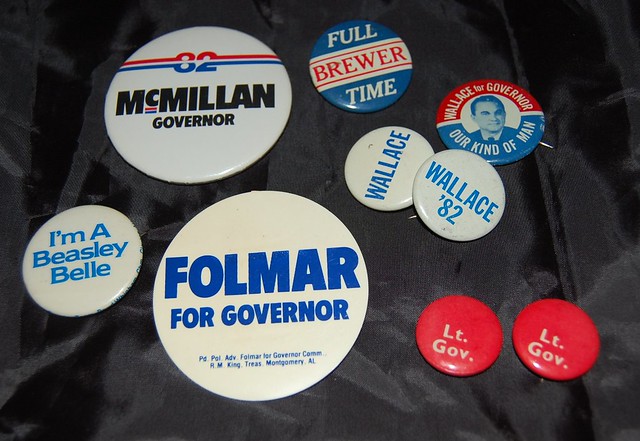
The two little buttons in the bottom right corner were my parents’. They campaigned across the state in 1978 with Jamie “Red” Etheridge when he was running for Lieutenant Governor of Alabama. My father probably met him through work they did together on a regional planning council. I don’t think Etheridge won that election. The most recent information I could find on him indicates he’s a trustee at Jacksonville State University in Jacksonville, Alabama.
Jere Beasley was Alabama’s Lieutenant Governor when Governor George Wallace suffered an assassination attempt in his presidential race of 1972. Beasley became acting governor when Wallace had to be out of state for an extended period because of his surgery and recovery. This button comes from his unsuccessful 1978 gubernatorial campaign. The Beasley Belle buttons were given to campaign volunteers. My mother was active in his campaign and made sure I got one of these after I made phone calls on his behalf.
Emory Folmar was a mayor of Montgomery, Alabama, and an unsuccessful gubernatorial candidate (losing to George Wallace in Wallace’s fourth term in 1982). Various controversies surrounded Folmar (including the banning of rock and roll concerts in Montgomery!). Lt. Governor George McMillan lost to Wallace in the Democratic primary during that same election season.
The “Brewer Full Time” button was a slam against Albert Brewer’s 1972 gubernatorial opponent George Wallace, who was often out of the state campaigning for president. Brewer was Lt. Governor under Lurleen B. Wallace, wife of George Wallace. During Wallace’s first term as governor, term limitations allowed a governor only one consecutive term. Wallace immediately began trying to change that, and when he hadn’t been successful nearing the end of his term, he persuaded his wife to run for the governor’s office. Her victory enabled him to continue to control the office while working to change the law. During part of Mrs. Wallace’s term, she was ill and out of the state for enough consecutive days for Brewer to become acting governor. Later, when she died, Brewer finished her term. In spite of his efforts to build a coalition between disenfranchised voters (blacks and poor whites), Brewer lost to Wallace, who had also won his battle to allow governors consecutive terms.
The Wallace buttons are from different campaigns, the one with his photo being the oldest. I found it in my mother’s sewing box. Even had they been living in the state during his early years in office, my parents’ views on civil rights would not allow them to support Wallace’s campaign promises of continued segregation (in later years, he recanted those views and apologized). In all, Wallace was governor of Alabama for four terms over three decades, and he ran for president four times.
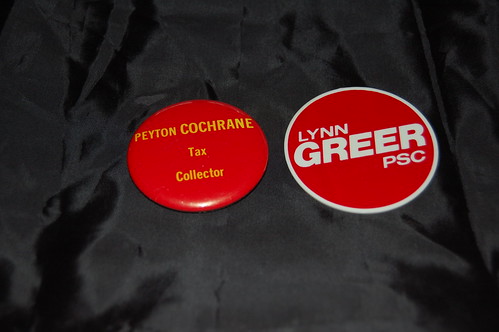
Peyton Cochrane has been the Tax Collector of Tuscaloosa County for over twenty years. This button might have been from his first campaign. It’s possible from research his father or grandfather shared with my mother that we are very distantly related. Cochrane, especially with the final “e,” was not a common name in North Alabama.
Endorsed by the Alabama Tea Party Express, Lynn Greer is a current member of the State of Alabama House of Representatives, where he initially served as a Democrat, and later, a Republican. This button is probably from his 1980 campaign for Public Service Commissioner.
 National Coming Out Day has been recognized on October 11 since 1988, when it marked the first anniversary of the 1987 March on Washington for Lesbian and Gay Rights. My friend Alan linked to a video of a newscast from that event in 1987, and as I watched it, I found myself thinking, In those days, because of AIDS, coming out, being visible, was a matter of life and death. When I finished watching the video, I realized–coming out is still a matter of life and death.
National Coming Out Day has been recognized on October 11 since 1988, when it marked the first anniversary of the 1987 March on Washington for Lesbian and Gay Rights. My friend Alan linked to a video of a newscast from that event in 1987, and as I watched it, I found myself thinking, In those days, because of AIDS, coming out, being visible, was a matter of life and death. When I finished watching the video, I realized–coming out is still a matter of life and death.